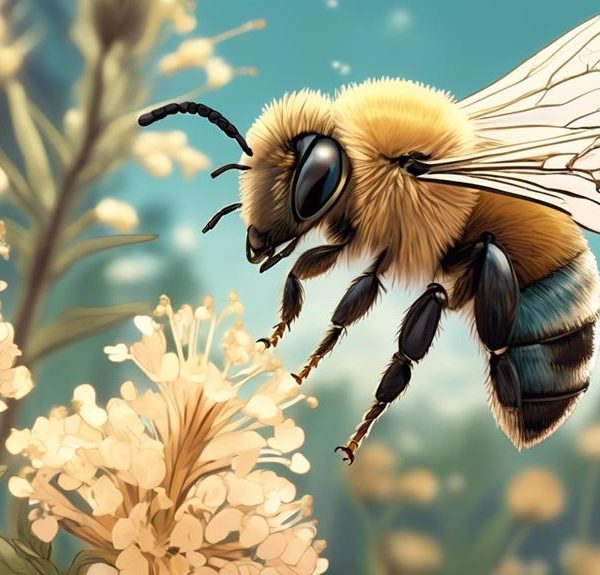Journey into the intricate world of Mason bee house placement; discover if the sun's embrace is a friend or foe to these little pollinators.
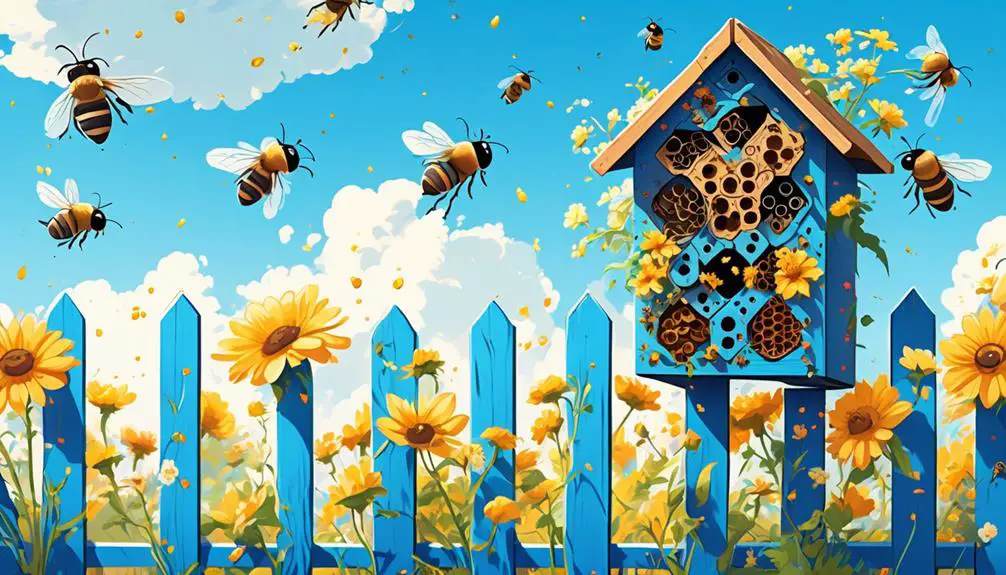
Should Mason Bee House Be in Sun?
As the old saying goes, 'there's no such thing as a free lunch,' and this certainly applies when considering the placement of a Mason bee house. You might think it's as simple as popping it up anywhere in your garden, but it's not quite that straightforward.
The question of whether to place it in the sun or not is a hot topic among bee enthusiasts and conservationists. Is the warmth beneficial, or could it be potentially damaging? As you explore this topic, you'll find there's a delicate balance to be struck, with a myriad of factors to consider.
But don't worry, we're about to unfold this mystery for you, so grab a cup of coffee and let's get into it.
Key Takeaways
- Mason bees rely on sunlight for their daily activities, including foraging and nest orientation.
- Sunlight serves as a natural alarm clock for mason bees, signaling them to start their day.
- Proper placement of the bee house, with morning sunlight exposure and afternoon shade, mimics the bees' natural waking cycle and promotes their productivity and survival.
- While sunlight is important, excessive sun exposure can be harmful to mason bees and can also damage the bee house. A balance of sun and shade is crucial.
Understanding Mason Bees
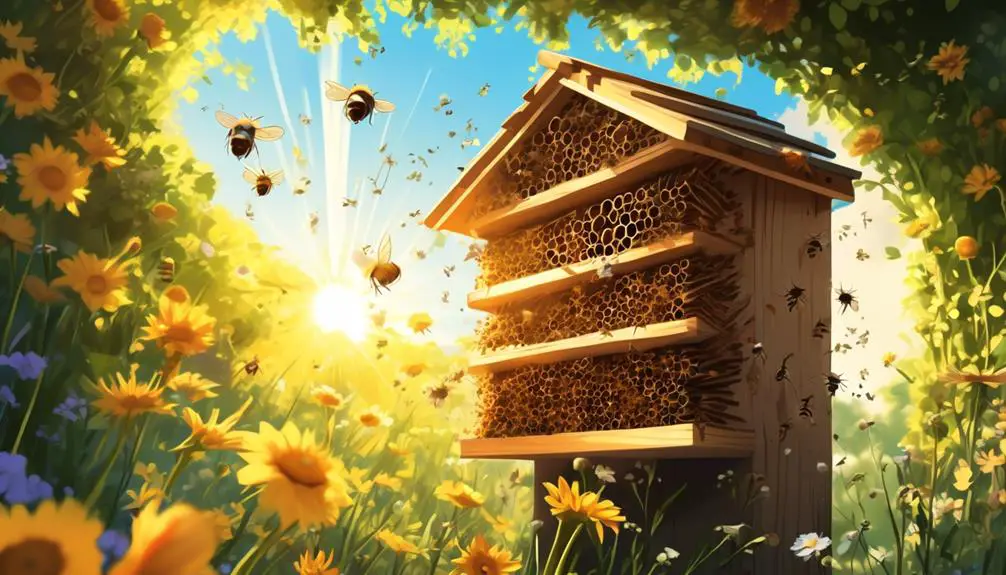
Before diving into the specifics of mason bee house placement, it's crucial to understand the nature and habits of these fascinating creatures. Unlike honey bees, mason bees are solitary insects. They don't live in large colonies, nor do they produce honey or beeswax. Instead, each female mason bee is a queen and works independently to lay her eggs.
Mason bees are named for their unique nesting behavior. They use mud, hence the 'mason' moniker, to create individual cells for their offspring in pre-existing holes. As pollinators, mason bees are critical to our ecosystem. They're extremely efficient, with a single mason bee capable of doing the work of 100 honey bees.
They're also non-aggressive and rarely sting unless directly threatened. This makes them a great choice for urban and suburban gardens where interactions with humans are likely.
Understanding these basic traits and behaviors is the first step in ensuring your mason bee house is correctly placed. It's not merely about attracting the bees; it's about creating an environment where they can thrive and contribute to the biodiversity of your garden.
Ideal Environment for Mason Bees

Building on our understanding of mason bees' traits and behaviors, we can now pinpoint the ideal environment these solitary pollinators need to flourish.
Mason bees prefer a habitat that's in full sun, especially in the morning. This helps them warm up and get started with their day's work. They're also fond of areas that are sheltered from wind and rain, as such conditions can hinder their activities.
When it comes to the placement of their nests, mason bees aren't picky. They'll happily settle in pre-existing holes and cavities. However, they tend to favor tubes with a diameter of about 5/16 of an inch, and a depth of 3 to 6 inches. So, when setting up a mason bee house, it's beneficial to replicate these conditions.
Additionally, mason bees need a source of mud. They use it to build their nests and seal the chambers where they lay their eggs. Ensuring a nearby, easily accessible mud source is a crucial part of creating an optimal environment for them.
The Role of Sunlight
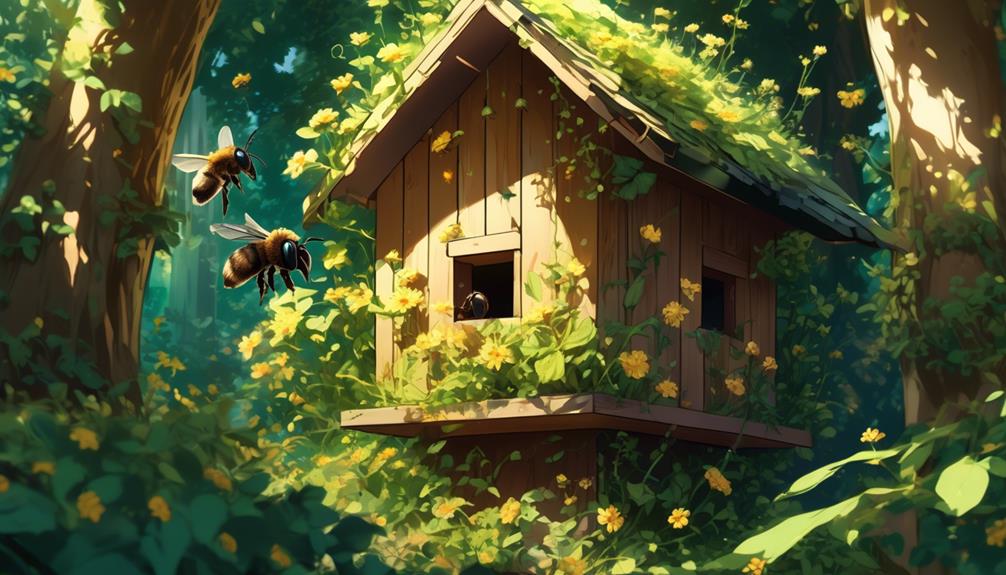
Understanding the role of sunlight in the life of mason bees is essential, as it's a key factor that influences their daily activities and nesting behaviors. Sunlight serves as a natural alarm clock for these industrious creatures, prompting them to begin their daily foraging. As cold-blooded insects, they rely on the sun's warmth to raise their body temperature, enabling them to fly and work.
Further, the sun's position helps mason bees orient their nests. They prefer entrances facing the morning sun, as it hastens the warming of their bodies, allowing them to start work earlier. Consequently, you'd do well to place your mason bee house in a location that catches the morning sun but offers some afternoon shade. This prevents overheating, which could harm the bees or their developing offspring.
Sunlight also plays a role in the life cycle of mason bees. They typically emerge from their cocoons in spring, timed with the blooming of flowers. This synchrony is critical for both pollination and the bees' food supply.
Pros and Cons of Sun Exposure
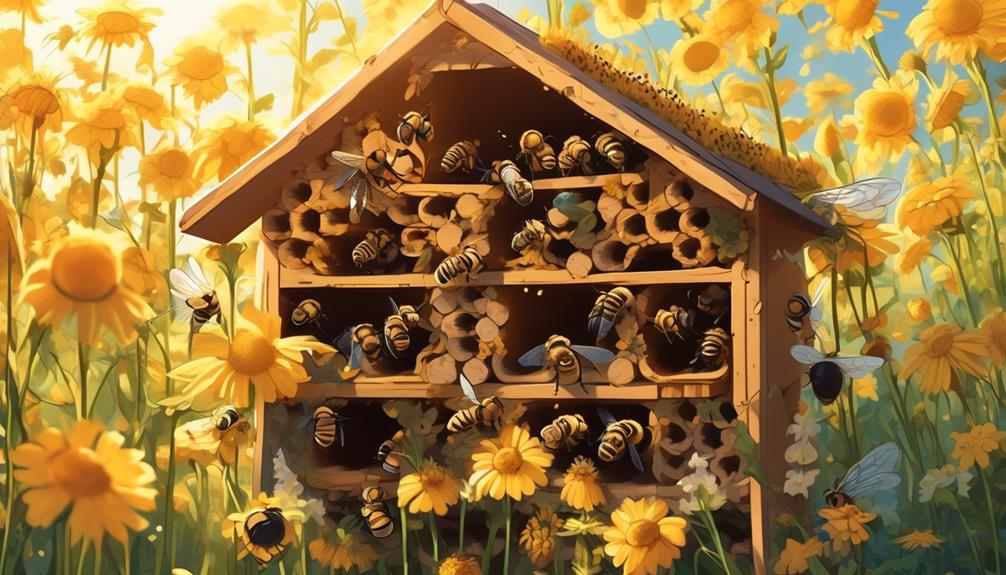
While recognizing the importance of sunlight in the life and habits of mason bees, it's also crucial to weigh the advantages and drawbacks of sun exposure for these insects.
On the pro side, sunlight provides necessary warmth that prompts mason bees to start their day. It's also vital in the maturation of larvae, facilitating the development of pupae into fully fledged bees. Moreover, mason bees rely on the sun's position for navigation and timing their activities. Thus, a mason bee house in the sun encourages higher activity levels and productivity in these industrious insects.
However, there are also potential cons to consider. Too much sun exposure can lead to overheating, which may harm the bees and cause premature emergence or even death. Furthermore, direct sunlight can cause the wood of the bee house to warp or crack, reducing its lifespan and effectiveness.
Therefore, while sunlight is beneficial, it's important to avoid excessive exposure. A balance of sun and shade, or placing the bee house in a location with morning sun and afternoon shade, can provide the optimal conditions for your mason bees.
Tips for Proper Mason Bee House Placement
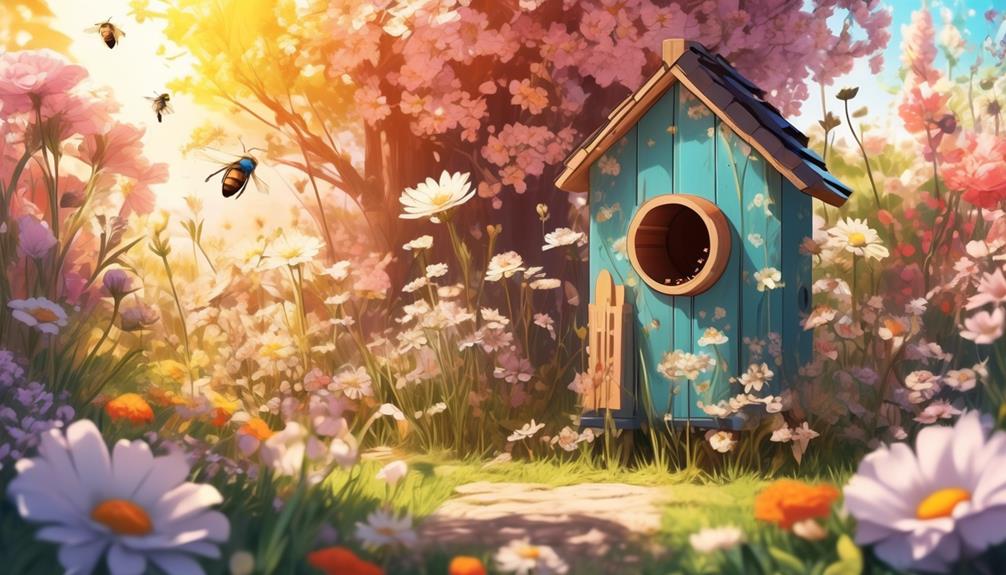
To ensure your mason bees thrive, it's essential you place their house in an optimal location, taking into account factors such as sunlight exposure, predation risk, and wind direction. Proper placement can significantly impact the bees' productivity and survival.
When considering sunlight, aim for a spot with morning sunlight exposure and afternoon shade. This pattern simulates the bees' natural waking cycle. Predation risk can be reduced by placing the house at least 5 feet off the ground, out of reach of common predators. For wind direction, the house should be placed with the entrance facing south or east, where it will receive less wind.
Here's a quick reference:
Factor | Recommendation | Reason |
|---|---|---|
Sunlight | Morning sun, afternoon shade | Mimics natural waking cycle |
Predation | At least 5 feet off ground | Reduces risk of common predators |
Wind | Entrance facing south or east | Less wind exposure |
Conclusion
In conclusion, yes, your mason bee house should be in the sun. Mason bees thrive in sunlit environments, but remember, moderation is key. Too much sun can overheat the house.
Ideally, place the house facing southeast with morning sun exposure. This promotes their early activity. Protect it from harsh afternoon sunlight.
So, it's a balance of sunlight and shade, ensuring your mason bees are buzzing with health and productivity.

